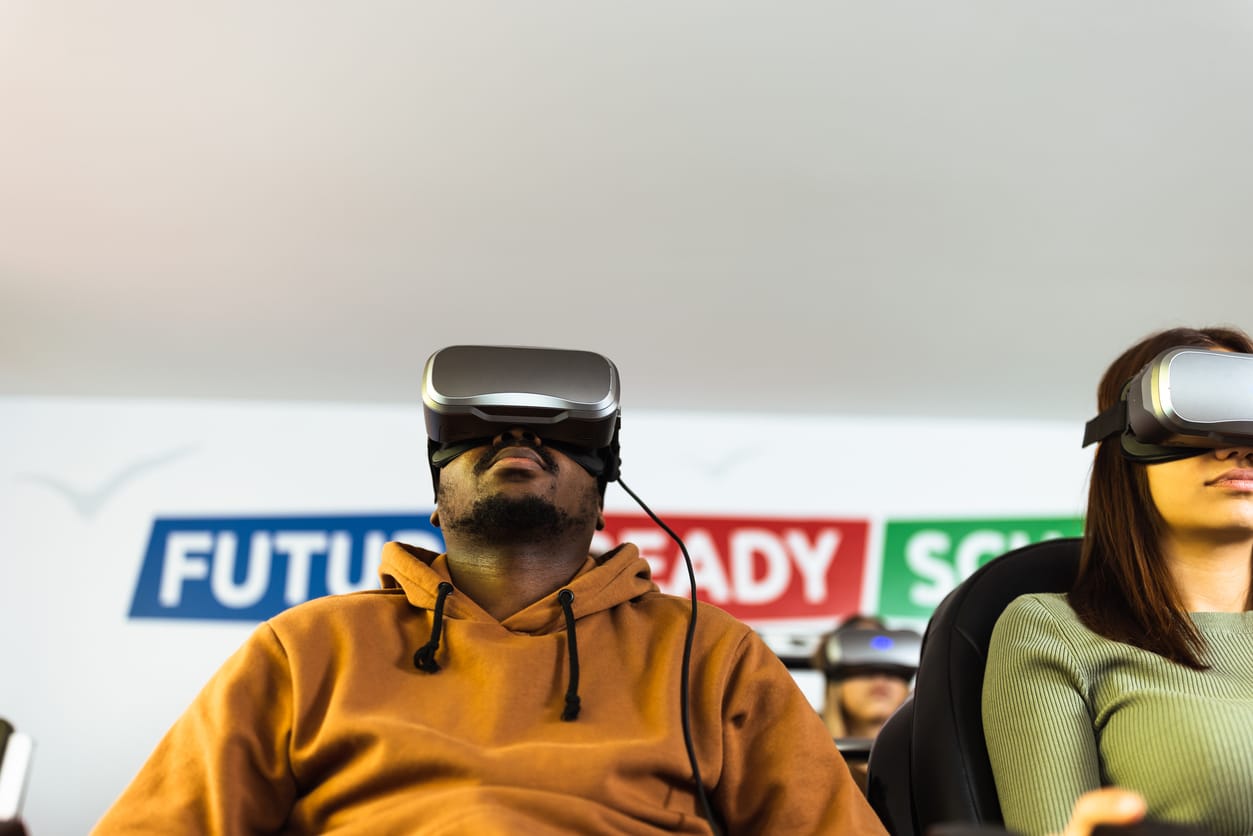
In a world where technology continues to redefine our experiences, virtual reality (VR) is stepping up in a big way. This is particularly true for people with visual impairments. One of the most exciting developments in this space is the growing use of VR headsets to enable visually impaired spectators to enjoy live sports games like never before.
For many fans, the roar of the crowd and the tension of a close match are unforgettable experiences. However, for spectators who are blind or have low vision, much of this thrill has historically been out of reach.
One of the most promising breakthroughs is the use of enhanced vision headsets, like those developed by GiveVision. These devices are worn like regular VR headsets but are specially designed for people with low vision.
Another innovation unveiled in Paris was the Vision Pad, a tactile tablet that lets blind and partially sighted users feel the movement of the ball and players in real-time. The user runs their fingers across the pad as a small magnetic ball moves to mirror the live action on the field—turning the sport into a touchable experience.
Modern VR headsets, when combined with powerful assistive technology, are providing real-time audio commentary, spatial soundscapes, and even haptic feedback to simulate the feeling of being in the stadium. These systems do more than simply describe the action—they aim to immerse users in it.
Royal National Institute of Blind People (RNIB) along with British Blind Sport, has published guidance for “making the match day experience accessible for spectators with sight loss.” This initiative is part of their broader campaign called “See Sport Differently,” which seeks to break down barriers to participation and enjoyment of sport for blind and partially sighted people across the UK.
To ensure the guidance is rooted in lived experience, RNIB and British Blind Sport consulted directly with blind and partially sighted fans. They also worked with a number of professional football clubs that are already taking steps toward greater accessibility.
What’s Next for VR and Sports Accessibility?
While many of these technologies are still in early stages or available only in select venues, the direction is clear: VR and immersive tech are becoming vital tools for accessibility. In the near future, we may see widespread deployment of consumer-ready VR headsets with built-in low-vision modes, complete with magnification, customisable contrast, and audio description.
Sports clubs and broadcasters are also beginning to understand the value of inclusivity. As more fans with vision impairments are able to enjoy matches fully—whether at the stadium or at home—the demand for these tools will only grow.
For partially sighted sports fans, watching a match no longer has to mean missing out. Virtual reality and other immersive technologies are opening up new ways to engage with the action, connect with teams, and enjoy the atmosphere of the game.
This is more than just innovation for innovation’s sake; it’s about making sure everyone has a chance to experience the magic of sport. As the technology continues to improve, the future looks bright for fans of every kind.
Keep up to date with latest tech trends and how Active Digital are supporting their customers with tech and the latest innovation solutions on LinkedIn.
Download our brochure from our website.


